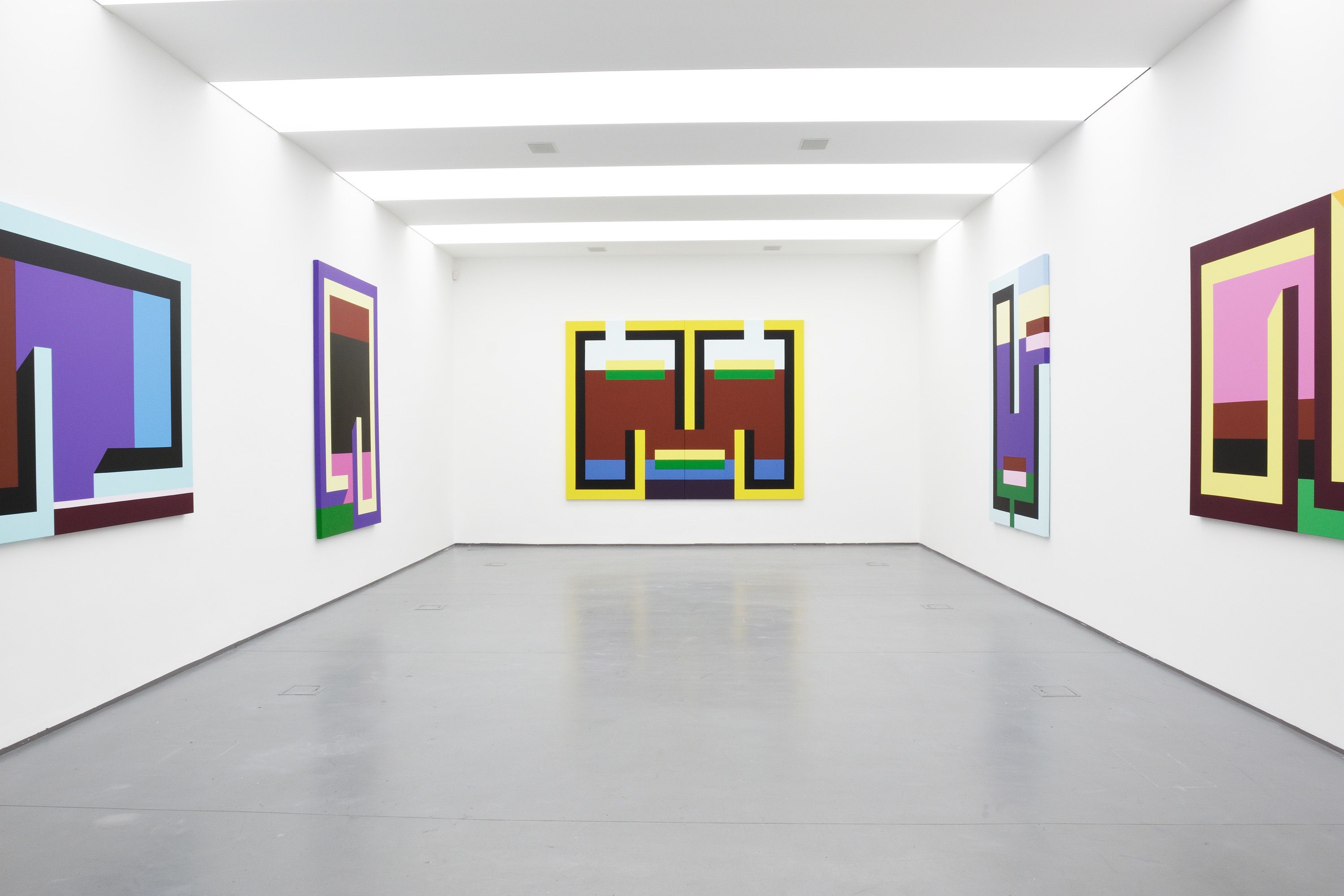Imre Bak
ÖN - ARC - KÉP 2017
| Venue: | acb Gallery |
| Date: | Nov 24 2017 – Jan 12, 2018 |
Description
At the latest exhibition of Imre Bak we present his new series of paintings from 2017. The most important compositional elements of the series are the dichromatic meander-like stripes framing monochrome colour fields. The organization of the band motif running through the paintings combined with the rectangles of various colours results in a peculiar spatial illusion. This motif is a recurring element in Imre Bak’s art; its first instances date back to 1970, but its antecedents can be traced back to the Stripes series painted in 1967-68. From the beginning, its use was related to the problem of the boundaries of panel painting, which first appeared in Imre Bak’s art with regard to his conception of the painting as an object towards the late 1960s. In analysing painting, one of the most significant conclusions the artist came to, and which would influence his entire praxis, was that he considered the painting an object independent of the outside world, having its own internal laws. In the spirit of this approach, Bak devoted special attention to the border of the painting, emphasising the stark contrast between its inner and outer spaces. The painted frame appearing in Imre Bak’s panels, usually discontinuous and not necessarily parallel with the borders, as well as the use of shaped panels, are instances of the aforementioned endeavour in this period. However, the function of the di- or polychromatic band that appears in several works from 1970, is not merely to mark the boundaries of the painting: the diagonal cropping of the ends of these highly contrasted parallel bands of colour evokes a sense of axonometric depiction, giving spatiality to these paintings. Snaking horizontally and vertically, the initially black and white, later colourful meander motifs of the early 1980s shifted gradually from symbolizing a frame towards ornamentation, to be transformed into dichromatic hexagons constructed in diverse ratios, used as hovering slim poles or imitating a robust building mass sticking out of the picture. For the first time in almost two decades, the dichromatic band of colour reappears in the paintings of 2017, as frame, as an almost architectural element giving an illusion of depth, or as a simple rectangular symbol.
An earlier group of these paintings compositionally evokes landscape associations. Compared to former, mainly architecturally inspired works of Bak with similar themes, the current “landscapes” avoid any kind of figurativeness. Their referentiality – inherent spatial and landscape-like character – is provided by the correlation of homogeneous colour planes and frame motifs. Their atmosphere evokes the coulisses of peculiar perspective seen in early 20th century metaphysical painting. Three of the exhibited paintings (Ön – Arc – Kép I-III.)* form a separate series in both formal and semiotic terms. Although these compositions are also based on homogeneous colour planes and double band motifs, their arrangement and the discontinuity of the bands of colour, their reduction into rectangles in some places, allows the spectator to interpret these works as stylised mask-like portraits. The motif of the human face is a recurrent subject of Imre Bak’s endeavours in painting since the mid-1960s. His anthropological and semiotic research in the field was first summarised by the artist in 1976 in his cycle of large canvases related to the theme of Sun – Man – Face. Studying the portrayal of the human face in archaic craft objects, Imre Bak was primarily intrigued by methods of reduction and questions of arrangement, with special regard to the relationship between different motifs. Also alluding in its title to the early series of paintings Sun – Man – Face, the starting point for the cycle ÖN – ARC – KÉP was also a motivic analysis, with a primary focus on how a specific arrangement and combination of a given set of abstract devices – the bands and rectangles of colour used in the current period – can become carriers of figurative meaning. The hyphenation of the words in the compound word which is the title of both the series and the exhibition further emphasises this analytic approach.
Bearing figurative referentiality, displaying relations of light and space, the paintings of the exhibition ultimately pry into the relation of representation and abstraction. By representing the questions he had already explored, but this time in new formal correlations, Imre Bak at once demonstrates the consistent continuity characterising his entire oeuvre, as well as his capacity for freshness and renewal.
*The Hungarian noun önarckép translates as “self-portrait”, but as a compound word it actually consists of the following three nouns: SELF (ön) FACE (arc) PICTURE (kép)

